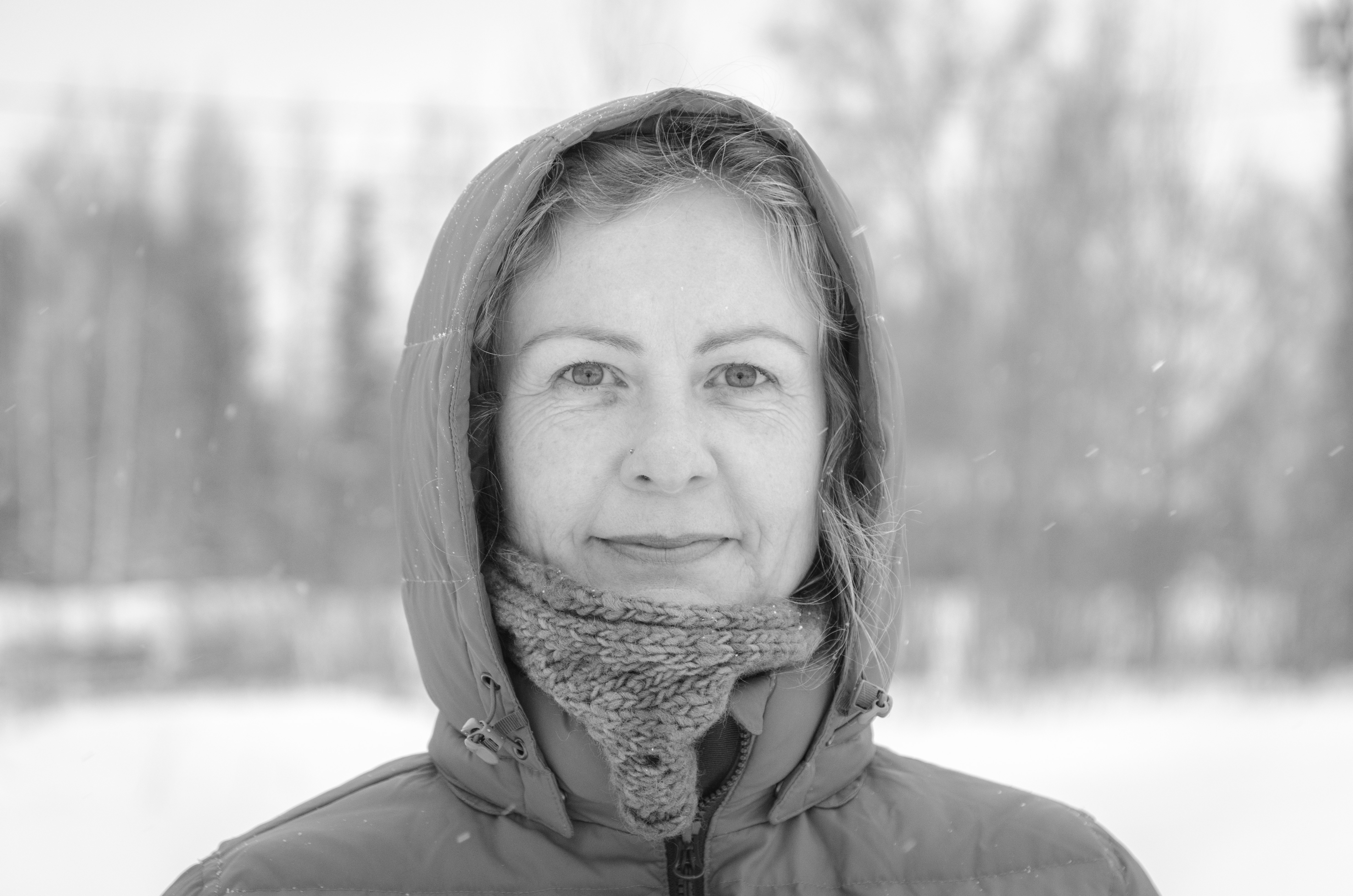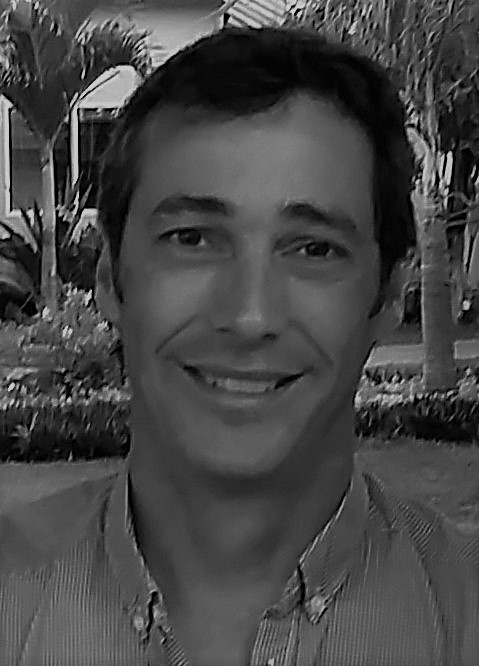Janet Winbourne


 Kristi Benson received her BA and MA in archaeology from the University of Calgary and has technical training in Geographical Information Systems from the British Columbia Institute of Technology. She has conducted ethnographic and archaeological research in British Columbia and Mexico, and has taught Anthropology and First Nations Studies classes at Malaspina University-College and Aurora College. She has also worked integrating traditional knowledge into the environmental impact assessment process and various land and marine-use planning projects in the NWT and BC. Kristi has worked with the Gwich’in Social and Cultural Institute since 2004, including coordination of the Mackenzie Gas Project Traditional Knowledge Study, review of land use permit and licence applications, as well as a variety of other projects. She lives on a farm in Manitoba with her partner and numerous sled dogs.
Kristi Benson received her BA and MA in archaeology from the University of Calgary and has technical training in Geographical Information Systems from the British Columbia Institute of Technology. She has conducted ethnographic and archaeological research in British Columbia and Mexico, and has taught Anthropology and First Nations Studies classes at Malaspina University-College and Aurora College. She has also worked integrating traditional knowledge into the environmental impact assessment process and various land and marine-use planning projects in the NWT and BC. Kristi has worked with the Gwich’in Social and Cultural Institute since 2004, including coordination of the Mackenzie Gas Project Traditional Knowledge Study, review of land use permit and licence applications, as well as a variety of other projects. She lives on a farm in Manitoba with her partner and numerous sled dogs.
 Rick is currently engaged in First Nations’ GIS program development as well as Marine Protected Area planning in British Columbia, Canada. Rick has a depth of experience in the development of GIS systems that support natural resource planning in diverse geographies including Alaska and the southwestern United States, British Columbia, Yukon and Northwest Territories, Canada, Republic of Seychelles, Namibia (Africa), Central and South America, and the Caribbean Basin. His technical background in Geographic Information Systems (GIS) architecture enables the development of database structures that serve as the foundation for data collection and analysis efforts that can support a quantitative, collaborative, and transparent approach to land planning and management. He advises planning teams on spatial analysis techniques and procedures and provides ongoing GIS training and technical support to project partners, to ensure the successful use and implementation of the products that he delivers. In recognition of his work, Rick was awarded the ESRI Special Achievement in GIS award for Conservation, in both 2005 and 2011.
Rick is currently engaged in First Nations’ GIS program development as well as Marine Protected Area planning in British Columbia, Canada. Rick has a depth of experience in the development of GIS systems that support natural resource planning in diverse geographies including Alaska and the southwestern United States, British Columbia, Yukon and Northwest Territories, Canada, Republic of Seychelles, Namibia (Africa), Central and South America, and the Caribbean Basin. His technical background in Geographic Information Systems (GIS) architecture enables the development of database structures that serve as the foundation for data collection and analysis efforts that can support a quantitative, collaborative, and transparent approach to land planning and management. He advises planning teams on spatial analysis techniques and procedures and provides ongoing GIS training and technical support to project partners, to ensure the successful use and implementation of the products that he delivers. In recognition of his work, Rick was awarded the ESRI Special Achievement in GIS award for Conservation, in both 2005 and 2011.
 Tracey has been supporting work of the Ɂehdzo Got’ı̨nę Gots’ę́ Nákedı- Sahtú Renewable Resources Board (SRRB) since 2017, invited to attend & participate in the Sahtú people in 2017 meeting of Yukon Shu’got’ine people, where Sahtú, & Kaska Ross River, Łı́ı́dlı̨ı̨ Kų́ę́ First Nation met in the Mackenzie Mountains to draft the Nió Ne Pęnę (NNP) Caribou Management Plan. This plan paves a way forward for people to work together on shared values for people, caribou and the landscape that is Nió Nę Pęnę, ‘Trails of the Mountain Caribou’. Working to support the community Indigenous partners that are implementing this transboundary plan for the health of the Nió Nę Pęnę landscape, during the pandemic, Tracey & Nature United has brought technical and financial support to initiate SRRB’s ‘NNP Geospatial Hub’ initiative, for their hosting of the NNP transboundary Canadian Mountain Network (CMN) Indigenous ‘Knowledge Hub.’ NU’s support is building SRRB in-house capacity to host community engagement & collaboration virtually and spatially on NNP, & where they see further value or application in their work with communities engaged with Sahtú wildlife management. In addition to the Geospatial Hub, Nature United is supporting SRRB’s work to support Sahtú communities that are designing & building their own way to do community conservation planning or HGS, with an initiative that will build the development of a Hı̨dó Gogha Sę́nę́gots’ı́ɂá (HGS) Toolkit.
Tracey has been supporting work of the Ɂehdzo Got’ı̨nę Gots’ę́ Nákedı- Sahtú Renewable Resources Board (SRRB) since 2017, invited to attend & participate in the Sahtú people in 2017 meeting of Yukon Shu’got’ine people, where Sahtú, & Kaska Ross River, Łı́ı́dlı̨ı̨ Kų́ę́ First Nation met in the Mackenzie Mountains to draft the Nió Ne Pęnę (NNP) Caribou Management Plan. This plan paves a way forward for people to work together on shared values for people, caribou and the landscape that is Nió Nę Pęnę, ‘Trails of the Mountain Caribou’. Working to support the community Indigenous partners that are implementing this transboundary plan for the health of the Nió Nę Pęnę landscape, during the pandemic, Tracey & Nature United has brought technical and financial support to initiate SRRB’s ‘NNP Geospatial Hub’ initiative, for their hosting of the NNP transboundary Canadian Mountain Network (CMN) Indigenous ‘Knowledge Hub.’ NU’s support is building SRRB in-house capacity to host community engagement & collaboration virtually and spatially on NNP, & where they see further value or application in their work with communities engaged with Sahtú wildlife management. In addition to the Geospatial Hub, Nature United is supporting SRRB’s work to support Sahtú communities that are designing & building their own way to do community conservation planning or HGS, with an initiative that will build the development of a Hı̨dó Gogha Sę́nę́gots’ı́ɂá (HGS) Toolkit.